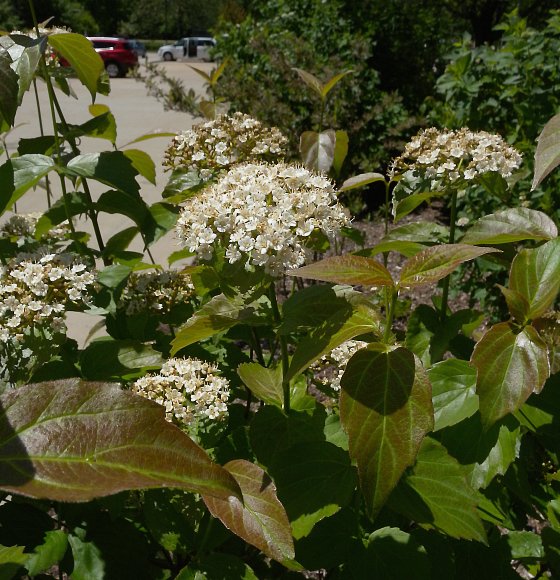
At the base of each petiole, there is a pair of persistent stipules; these stipules are light green to reddish green, linear in shape, and about ¼" long. Many upper shoots terminate in dome-shaped panicles of flowers that are 1½–3" across. Each flower is about ¼" across, consisting of a white corolla with 5 spreading rounded lobes, a shallow light green calyx with 5 short broad teeth, 5 exserted stamens with white filaments and tan anthers, and a white pistil. The stiff branches of the inflorescence are light green and usually slightly pubescent. The blooming period occurs from late spring to early summer, lasting about 2-3 weeks. The flowers have an unpleasant fragrance. Afterwards, the flowers are replaced by single-seeded drupes. At maturity, these drupes are dark blue-violet to black, globoid to ovoid in shape, about 1/3" (8 mm.) long, and glabrous; they are fleshy and juicy inside. Each drupe has a single stone (hardened seed) at its center. The stones are about ¼" (6 mm.) long, broadly ellipsoid in shape, and somewhat flattened. The root system is woody and spreading. This shrub spreads by reseeding itself. During the autumn, the leaves of this shrub become various shades of reddish-purple.
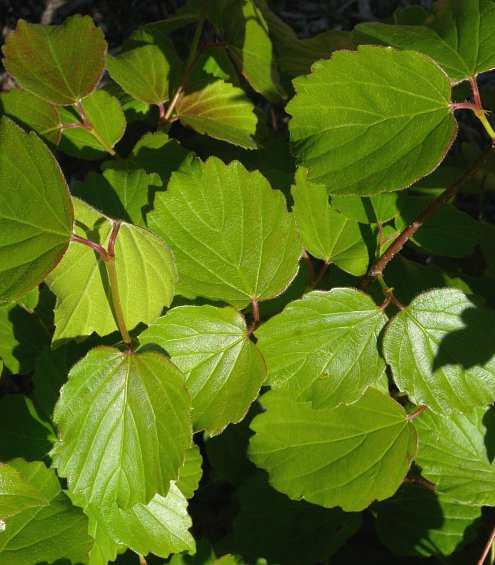
Cultivation: The preference is full or partial sun, mesic to dry conditions, and well-drained soil containing loam, clay loam, or some rocky material. This shrub is very adaptable to cultivation in gardens and various landscape settings. It tends to be more productive of flowers and fruit in sunnier situations. This is one of the smallest viburnum shrubs. Winter-hardiness is very good, especially if the stock has a northern provenance.
Range & Habitat: Rafinesque's Arrow-wood is native to the upper half of Illinois, where it is uncommon to occasional (see Distribution Map). This shrub is found in the eastern-half of the United States and its range extends into Canada. In mountainous and boreal areas, it can be common. Habitats include bluffs, upland woodlands, wooded slopes, woodland openings, woodland borders, and upland savannas. The dominant canopy trees in these habitats are often oaks. In Illinois, this shrub is typically found in higher quality natural areas.
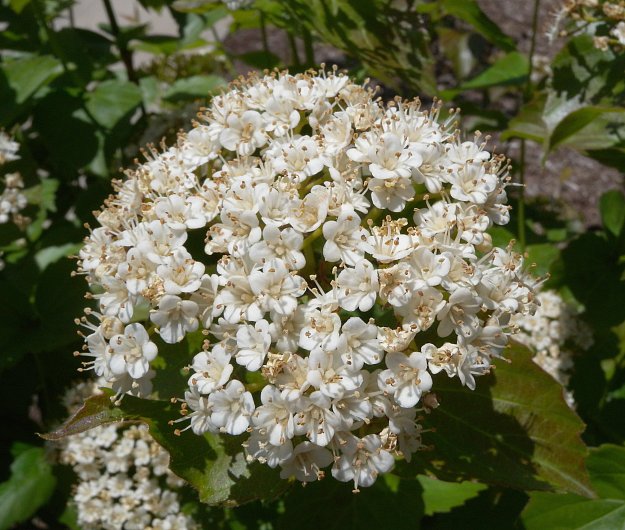
Faunal Associations: Most of the following information applies to Viburnum spp. (Viburnums, Arrow-woods) in general. The unpleasantly scented flowers of Arrow-woods attract a variety of insects, especially short-tongued bees, flies, and beetles. These insects feed on the nectar or pollen of the flowers; some bees also collect pollen as food for their larvae (Robertson, 1929). A variety of insects also feed on these shrubs destructively. These species include Pyrrhalta viburni (Viburnum Leaf Beetle), larvae of Oberea tripunctata (Dogwood Twig Borer), the larvae of Sackenomyia commota (Arrow-wood Blister Midge) and other gall flies (Cecidomyiidae), Lygidea viburni and other plant bugs (Miridae), Aphis viburniphila (Viburnum Aphid) and other aphids, the larvae of Macrophya mixta and other saw flies, larvae of the butterfly Celastrina argiolus (Spring/Summer Azure), the larvae of Agriopodes fallax (The Green Marvel) and many other moths. See the Insect Table for a more complete list of these insect feeders.
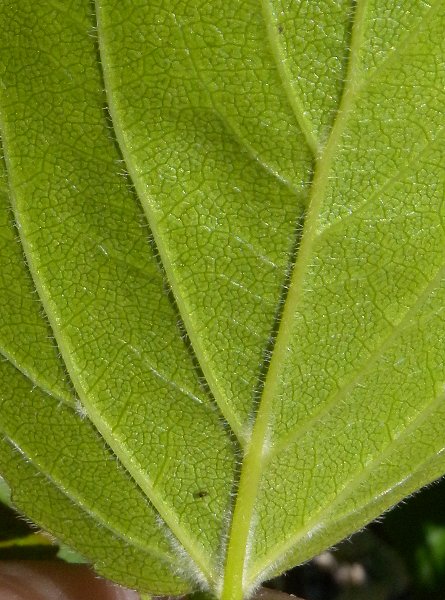
Many songbirds and upland game birds feed on the fruits of Viburnum spp., including Rafinesque's Arrow-wood. These species include the Ruffed Grouse, Wild Turkey, Northern Flicker, Brown Thrasher, Hermit Thrush, Eastern Bluebird, Cedar Waxwing, White-throated Sparrow, and others (see the Bird Table for a more complete list of these species). Some songbirds, including the Hooded Warbler (Wilsonia citrina), also use these shrubs for cover and nesting habitat (DeGraaf, 2002; Bielefeldt & Rosenfeld, 2001). Mammals that feed on the fruits (and/or their hardened seeds) include the Black Bear, Red Fox, Striped Skunk, Opossum, Fox Squirrel, Gray Squirrel, Striped Chipmunk, and White-footed Mouse. Both the fruit-eating birds and mammals that eat the fruit, but not the seeds, help to spread the seeds of Rafinesque's Arrow-wood and other Viburnum spp. to new locations. The Cottontail Rabbit and White-tailed Deer occasionally browse on the foliage and twigs (Martin et al., 1951/1961; Noyce & Coy, 1990; Rogers, 1987).
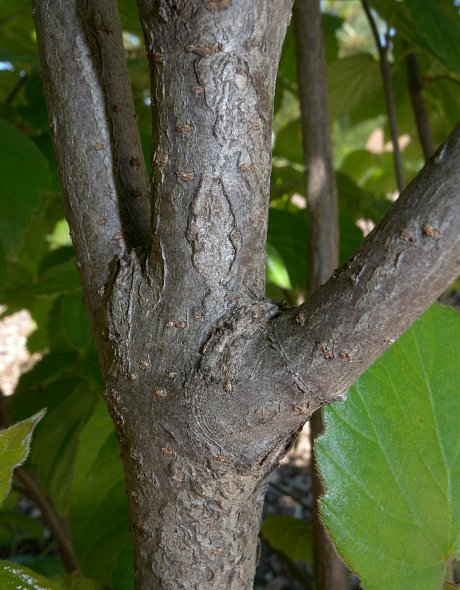
Photographic Location: A shrubby garden along a sidewalk in Urbana, Illinois. The less hairy variety of this shrub has been photographed, Viburnum rafinesquianum affine.
Comments: This is a small attractive shrub. Rafinesque's Arrow-wood can be distinguished from other Viburnum spp. by its small size (3-6' tall), the relatively few teeth along the margins of its leaves (about 5-10 on each side), the short petioles of its leaves (up to ¼" in length), the small linear stipules at the base of its petioles, and its malodorous flowers (typical of Arrow-woods, but not Viburnums). Depending on the variety, this shrub is variably hairy. While the typical variety of this shrub (Viburnum rafinesquianum rafinesquianum) has leaf undersides that are hairy both on the veins and between the veins, the less hairy variety of this shrub (Viburnum rafinesquianum affine) has leaf undersides that are sparingly hairy along the veins only. Both of these varieties can be found in Illinois and neighboring states. Another common name, Downy Arrow-wood, is more suitable for the typical variety of this shrub.